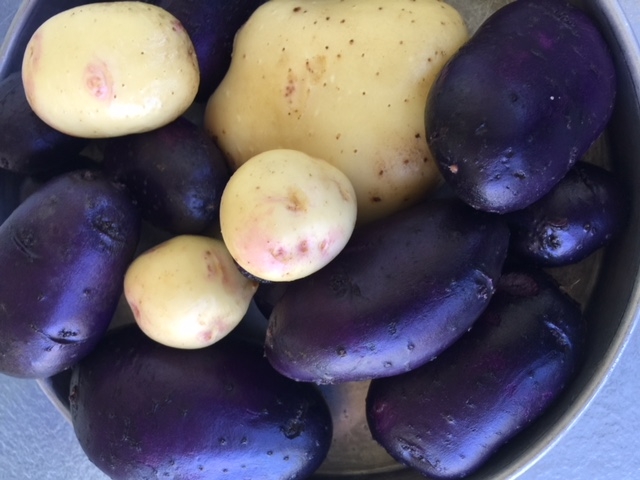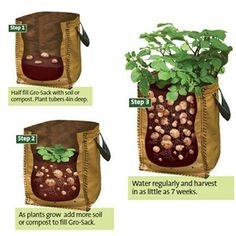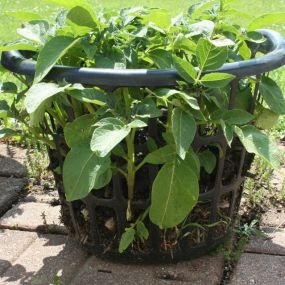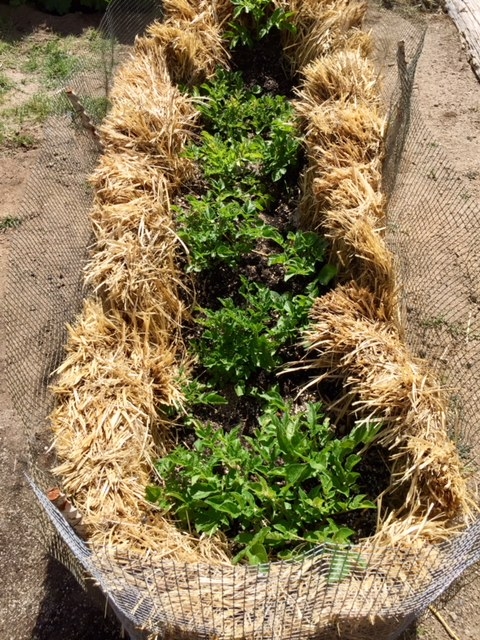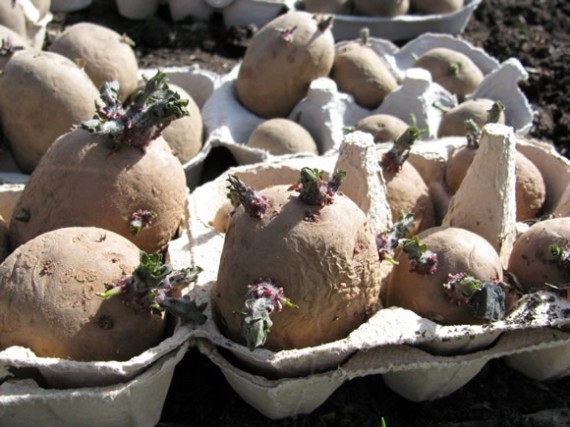| Ed. Note: Potatoes grow well in the Eastern Sierra. Usually we grow them in the ground, but some gardeners have alkaline soil or no soil at all! Gardeners like to try new things and this article has some fun ideas to try. You can find some UC info on potatoes here. Mention of products does not constitute endorsement. |
I told a friend I built a potato pen and they asked if I had a problem with my potatoes escaping the garden…well no, they don't escape but if they try I have it covered.
Truth is the potato is one of my favorite home grown vegetables, but over the years of gardening I hadn't given the process much thought. Last spring, moving my focus from tomatoes to potatoes, I decided to grow more, more variety, with hopes of plenty to enjoy throughout the winter months.
https://www.unwins.co.uk/growing-potatoes-in-potato-growing-bags-how-to-ggid53.html
https://preparednessmama.com/grow-potatoes/
With a little research I found that the potato possibilities are endless! Grown by the acre or container. A mound of dirt, potato sack, wooden spud box, recycled plant containers, a laundry basket, or your own invention, are all suitable options for growing a tasty crop of taters!
Some suggest planting directly in the laundry baskets or cages. In dry regions like the Owens Valley it might be better to line the inside of the basket, cage, or pen with straw or newspaper to maintain soil structure and also create a ventilated barrier that retains some moisture and keeps the tubers cool. It is also important to note that potatoes that are exposed to light rapidly become green and poisonous.
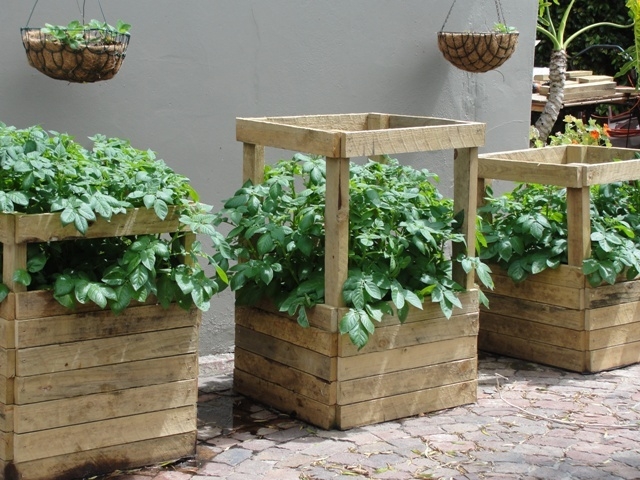
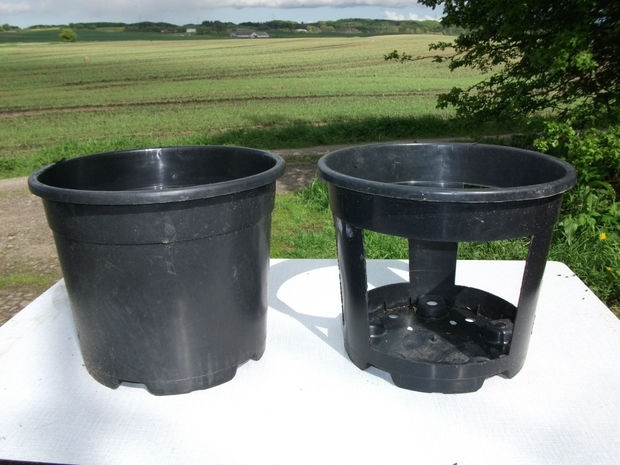
Some common characteristics of these containers are depth (no digging just filling), well-drained, and ventilation to reduce chance of rotting seed potatoes. The biggest challenge in container planting is keeping the soil cool where a garden bed or larger space can maintain a more constant cool temperature.
Meet my invention, the Potato Pen (left). I wanted a minimal investment and these materials were extras from my garden shed. I didn't want to worry about the weed covered surface so I lined the floor of the pen with newspapers and cardboard. The chicken wire sidewalls were lined with a thick layer of straw to retain some moisture and keep the tubers cool. The pen provided depth for growth, room to add soil as the plants grew, supplying the root system with room for an abundant crop.
I first let the potatoes sprout in an open egg carton, cutting the larger potatoes in half or more. This also allowed for the cut potatoes to dry, reducing the chance of rotting. This process is called “chitting” your potatoes. It is thought that this encourages faster growth and an increased crop.
The sprouted seed potatoes were then started in about four inches of soil with sprouts facing up. As the sprouts grew I added more soil. The straw was probably not the best idea as it became a mega condo project for every earwig in my yard. At night they devoured my potato plant leaves. I filled shallow plastic cups with water and a splash of fish oil and strategically placed them around the potato plants. I was amazed at the numbers filling the cups overnight.
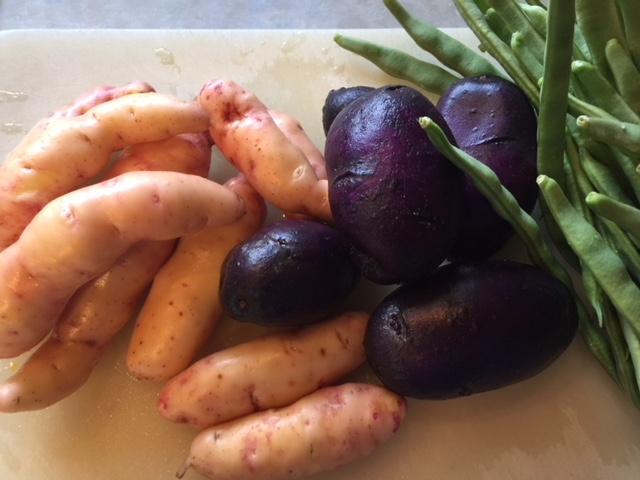
Overall the potato pen worked well. At season-end it was filled with an abundant crop of potatoes. Originally, I had planned on removing the stakes, pulling down the sidewalls of chicken wire and straw and harvesting all the potatoes at once, but I soon realized there were too many potatoes. So many that I left the majority in the cool soil of the potato pen (root cellar).
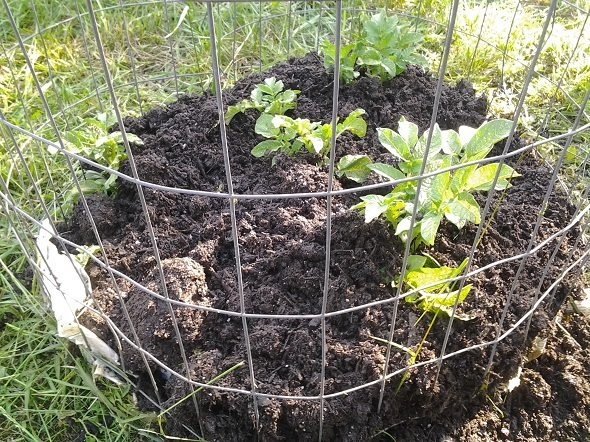
As I said at the start, the potato possibilities are endless. So why not grow your own? It's recommended that you buy your seed potatoes from a reliable source as potatoes are susceptible to disease and virus. Follow a few basic steps and prepare to enjoy the best tasting potatoes yet.
Potatoes are a cool season crop. Plant two or three weeks before the last spring frost or sooner if you plan to protect the plants. They can survive freeze damage but will most often have a reduced crop. As noted above, let your seed potatoes develop some sprouts before planting. I'm thinking the round cages will be easy to protect against unexpected spring frost.
Regardless of what container or bed you decide to plant them in make sure you use fertile, sandy loam that is well drained. They will grow in most soils but a good soil mix will improve the yield.
The UC Vegetable Research and Information Center provides a great leaflet (Growing Potatoes) that covers varieties, soil preparation, fertilization, planting methods, irrigation, cultivation, pest control, and harvesting. http://vric.ucdavis.edu/pdf/potato_growingpotatoes.pdf
If garden space is limited have some fun and try growing them in the laundry basket. It's cheap, lightweight, and they come in a variety of shapes and sizes. https://preparednessmama.com/grow-potatoes/
